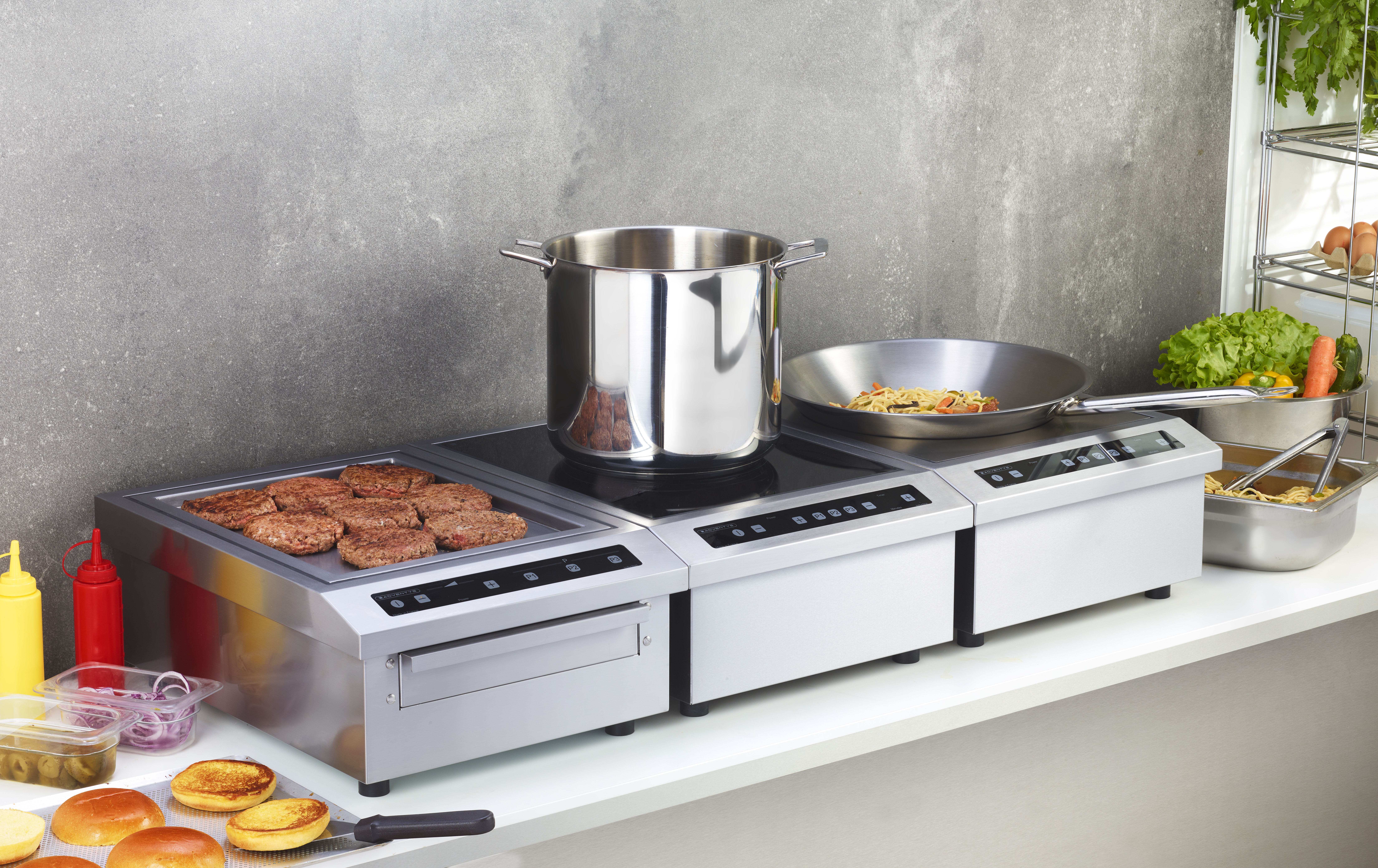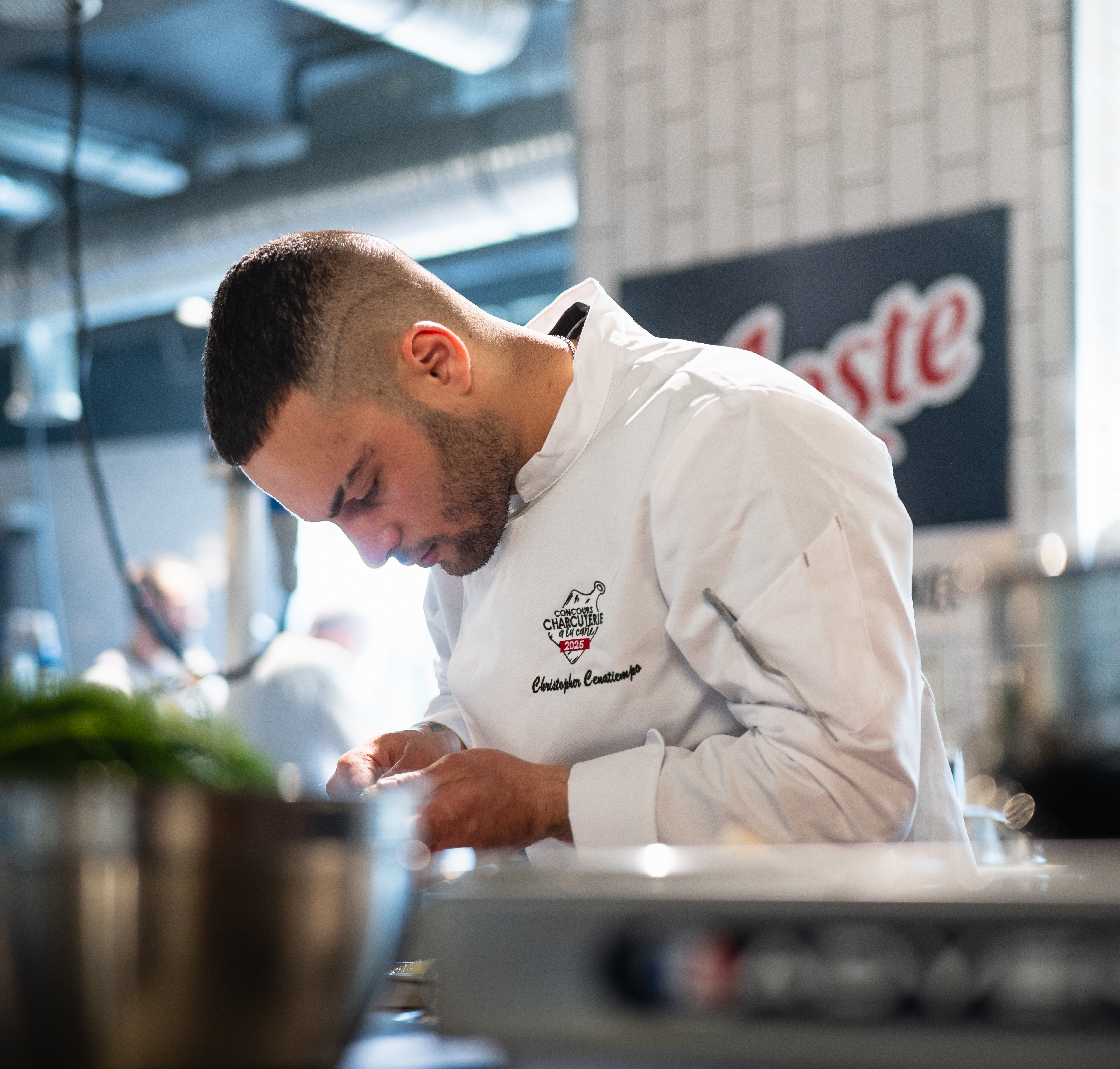Vitroceramic vs induction: what are the differences and what choice for a chef ?

In a sector where efficiency drives profitability, the choice of cooking equipment is a true performance lever. A service that starts with a slow cooktop means a delayed dish, an impatient customer, and a stressed-out team.
In this article, discover the face-off between two leading cooktop technologies. Ceramic vs. induction: what are their differences and how do they perform? Which technology should professional kitchens choose?
Electric VS Induction: How Do These Two Technologies Work?
Often compared, vitroceramic and induction cooktops have been competing for the favor of chefs and restaurateurs for years. To determine the best solution, it's essential to first understand how each technology works.
An induction cooktop operates using an electromagnetic field.
Beneath its glass surface, a coil generates a current that activates the electrons in the metal cookware. Heat is then produced directly within the pan, without heating the cooktop surface itself.
Vitroceramic/electric cooktops, on the other hand, use heating elements located beneath a ceramic glass surface. There are two types of eletric cooktops:
- Radiant cooktops, which work using electric resistance elements
- Halogen cooktops, which rely on an infrared lamp
How does an induction cooktop works ?
An induction cooktop uses an electromagnetic field to heat the cookware directly. Beneath its glass surface, a coil generates a current that activates the electrons in the metal of the pan. As a result, heat is created directly inside the cookware, without heating the cooktop itself.
Advantages of induction:
Ultra-fast heating in just a few seconds
Energy efficiency: heat is transferred directly to the pan, with no loss
Maximum safety: the surface remains cool to the touch when no cookware is present
How does a electric cooktop works ?
Electric cooktops use heating elements under a ceramic glass surface. There are two types of electric cooktops:
- Plates with radiant heating elements, which use electric resistors.
- Halogen hotplates, which use an infrared lamp.
Electric vs induction: which solution performs better?
In a professional kitchen, a second too long on the heat and a dish can turn to disaster. Temperature must be precise and heat evenly distributed. A high-performance hob is not just an asset, but a necessity for any demanding restaurateur. Glass-ceramic vs induction: which wins out in terms of performance? We explain.
Electric vs induction: rapid heating and precision
In terms of heating speed, the induction hob is by far the most efficient. Thanks to its magnetic field, it heats a pan in a matter of seconds. Ceramic glass, on the other hand, heats more slowly, but distributes the heat evenly. The result: a slower rise in temperature and an equally laborious fall.
In the heat of the moment, every second in the kitchen is precious, and there's no room for waiting. This is where induction comes into its own. With an induction hob, water simmers in seconds and a frying pan reaches the ideal temperature almost instantly.
In contrast, glass-ceramics transfer heat to the surface of the hob, which then heats the pan. This slower heat-up process has the advantage of distributing the heat evenly. So, for a chef who needs to prepare one dish after another without wasting time, induction really seems to have the edge.
Electric vs induction: energy efficiency and power consumption
Beyond performance, there's another factor that can make you cringe: the electricity bill. Here again, induction has everything it takes to win over professional chefs. It heats only when a pan is detected, which means that without contact, there's no risk of wasting energy.
Glass-ceramics, although more energy-hungry, have one advantage: their thermal inertia. In concrete terms, if you switch it off a few minutes before the end of cooking, it continues to heat without consuming energy. Clever, but less efficient in the long term.
Electric vs induction: what's the right choice for a chef?
For a professional kitchen, the hob is a strategic choice that affects efficiency, safety and even budget.
Selection criteria to check
When you're cooking for customers, it's out of the question to choose your hob at random. Here are the criteria to sift through:
- Heating time: speed is often synonymous with efficiency.
- Precision and temperature control: cooking to the exact degree is the guarantee of a result that borders on perfection.
- Energy consumption: induction uses much less energy than glass-ceramic hobs.
- Maintenance: ceramic hobs clog up quickly and require a lot of elbow grease.
- Cost and profitability: an induction hob is more expensive to buy, but the savings and time saved more than compensate.
- Practicality: with electromagnetism, only cast-iron or steel pots and pans work on an induction hob. Not very practical if you don't have the budget to renew your cookware.

Induction hobs: the smart choice for professionals
Induction technology ticks all the boxes for professional cooking: fast, efficient and economical. It can be used for intensive cooking while remaining economical.
Despite its many advantages, induction does have a few limitations, starting with the need to use compatible utensils. The purchase price can also be an obstacle. In any case, thanks to its energy efficiency and performance, the investment pays for itself in no time.
Adventys induction hobs, a guarantee of performance and innovation
Adventys is THE reference for professional hobs in France. A committed French brand that designs ultra-high-performance hobs adopted and recommended by chefs. Our 100% French production guarantees impeccable quality. What's more, Adventys controls the entire process thanks to its in-house design office.
ISO 9001 certified, the plant meets the most stringent requirements in terms of quality and innovation. Every year, new products are launched to meet the evolving needs of kitchen professionals. Adventys induction hobs come in all configurations: from 1 to 16 hearths, with power ranging from 1,000 to 32,000 W, multizone induction, wok, plancha... There's something for every need and every budget!
A strategic choice for chefs and restaurateurs
Glass ceramic vs induction: which technology is right for you? Ultimately, the induction hob is the obvious choice for professionals. Faster, more precise and far less energy-consuming than glass-ceramic, it optimizes every cooking gesture while reducing electricity bills.
Whatever your choice, remember that the performance of your hob also depends on how it is used. Regular maintenance is essential if you are to enjoy your equipment for as long as possible.
Whatever your sector, Adventys can help you choose the ideal hob for your business. Switch to induction and optimize your professional kitchen today!
Share this content

